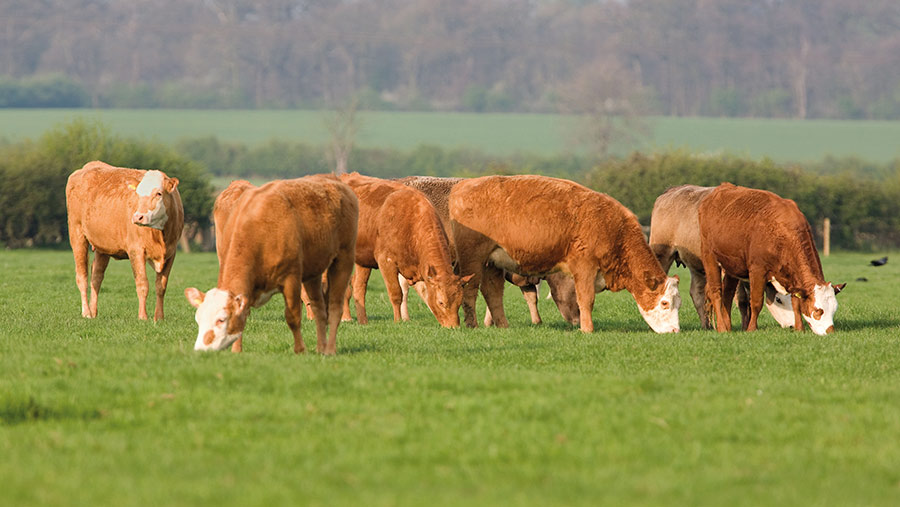Gene-editing breakthrough could cut ruminant methane
 © Tim Scrivener
© Tim Scrivener Scientists have successfully switched on a plant gene in feed crops that could help reduce methane emissions from cattle and sheep.
Studies have indicated ruminant methane emissions can be cut by 5% for each 1% increase in dietary lipid content, and Rothamsted Research scientists have been investigating ways to increase it in grazing or feed crop plants.
See also: Young farmers vote to source and better promote British food
Using a model plant species called Arabidopsis, the scientists snipped out a section of genetic material and then joined the two exposed ends together.
This fused a “dormant” gene that is capable of stimulating lipid production with a non-essential gene that is switched on.
The non-essential gene acts as an on-switch and, once the genes were joined, the plant leaves accumulated vegetable oil.
Expression in the leaves was enhanced by more than 20-fold and the oil content increased by 30-fold, Rothamsted researchers found.
Professor Peter Eastmond said the team knew the effect was possible because it had been shown using a process of genetic modification.
But the breakthrough at Rothamsted was made with gene-editing techniques that manipulate the plant’s own DNA rather than using genetic modification to insert foreign material.
“The increase in leaf total lipid content, without inserting foreign DNA, is likely to significantly enhance productivity and reduce methane emissions from cattle and sheep if replicated in pastures,” Prof Eastmond claimed.
This is the first demonstration using a gene-editing deletion approach in any organism, with previous methods not managing it in a precise and predictable way, he added.
The hope is that this technique could be adapted to a variety of situations where plant breeders want to turn genes on, rather than just turning them off, as is often needed for crop improvement.
Prof Eastmond also pointed out that gene editing was less controversial than genetic modification.
“There are many barriers to commercialisation of GM crops and so it may be desirable to achieve gain-of-function by other means, if possible.
“This deletion strategy offers a transgene-free route to engineering traits that rely on switching genes on, such as crops producing high lipid feedstuffs for sheep and cattle,” he suggested.
